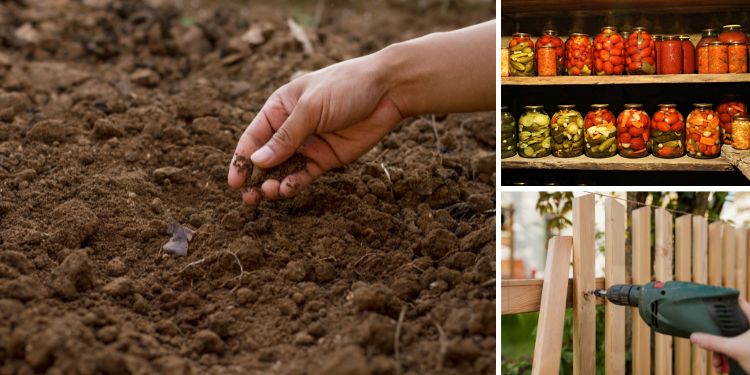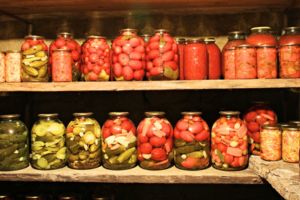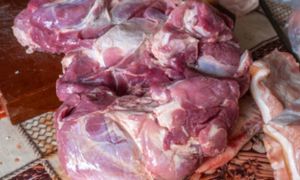How to Live with Almost No Money at All

When disaster strikes or a minor recession turns into a full-blown financial crisis, money is going to get tight for everyone. Even if you have a preppers larder loaded to the ceiling, living off practically no money at all will give you the best chance of surviving in the long run.
I was raised and mentored by the Greatest Generation. People who survived the Great Depression, and World War Two on rock solid principles that maximized what every penny was worth. So, I’ve taken a lot of principles I was taught and modernized them.
Keep Chickens
With the right practices, you can keep a handful of hens for next to nothing, while they give you a nearly daily supply of eggs. While some chickens lay more eggs than others, feeding them this plant will double egg production.
Mobile pens or a portable chicken coop set up in between the rows of your garden will give them forage, while eliminating weeds and bugs. A year’s supply of calcium supplements for a half dozen hens costs less than $10.
You can even add their feces to ground up oak leaves to create a high-powered fertilizer for your garden. When the hens stop laying around 3 years old, you harvest them for meat or chicken soup in the freezer.
Keep a Garden & Put Up What It Produces
Growing your own food is one of the cornerstones of living with almost no money at all. Yet, you need to be strategic to keep a truly cost-efficient garden. This includes things like:
- Growing heirloom vegetables
- Using regenerative garden practices
- Organic gardening and compost fertilizing
- Watering from rain barrels
- Companion planting
- Succession planting
- Gardening with cold frames made out of old windows

With some ingenuity, you can pickle, can, dehydrate, or freeze the excess produce.
To learn how to preserve your entire harvest and make the most of it, I recommend this all-in-one guide. It will teach you time-tested methods to ensure you have a well-stocked pantry all year round.
This is a great way to live off very little money during the winter months when the cost of living is always higher.
Cook Your Own Meals
Cooking your own meals isn’t just a great way to save money. I’m not talking about replicating fancy meals you see on TV cooking programs. I mean downhome old school cooking.
When I was a boy grandma forced me to learn how to cook in ways that turned cheap humble ingredients into something delicious. Some of the top options I use to this day:
Schweinhaxe is made from slow cooked pork shanks that you can fry, roast or smoke after braising them tender, but I love to smoke it!
Chicken dumpling soup can be made from simmering chicken bones, skin, and scrap meat. After straining add some vegetables and make dumplings from flour and egg.
Related: What the Amish Ate During the Great Depression
Bone marrow on toast was my grandfather’s favorite meal and very nutrient dense. You can get beef long bones from a butcher for free or next to nothing. Roast until the marrow is like spreadable butter and put on toast.
Headcheese is made from simmering the head of a pig or braising hog jowls and setting it with some gelatin. You can then cut it into slices for weeks works of sandwiches.
Learn What You Can Forage in Your Area
 With a little research and local know-how, you’d probably be surprised at just how many forage foods are available in your area.
With a little research and local know-how, you’d probably be surprised at just how many forage foods are available in your area.
I’m not just talking about springtime morel mushrooms, or if you have the golden luck to stumble upon a hen of the woods.
Even if you aren’t comfortable with your mushroom identification skills, the humble dandelion is 100% edible at different times in its life cycle. The greens before it flowers are just like arugula. You can even dry and grind up the roots to make a decaffeinated drink that tastes a bit like coffee. Wild berries grow all other the place in certain parts of the country.
If you’re unsure about what grows in your area, The Forager’s Guide to Wild Foods will definitely be of great help. This book will show you how to identify plants, let you know which ones are edible or medicinal, and explain how to use them. It is filled with high-resolution, full-color, full-page images to make plant identification easy and accurate.
Butcher Your Own Meat
One of the best ways to feed yourself on very little money is to buy and butcher a whole chicken. You can usually get one at the grocery store for around $6 to $7, which is much less than if you bought the family pack of chicken, where you’re paying for the labor and packaging.
You can carve the chicken up into two breasts, thighs and drumsticks. Then use the wings and the rest of the carcass to make chicken noodle soup. For $10 all-in with veggies and noodles, you can feed yourself for the better part of a week off that single chicken!
If you have a Sawzall, and you know some of the local farmers you could really take this to the next level. A lot of farmers need to cull their herds in the winter. Some will even sell pigs and goats.
 For years my buddy and I would buy a 260-pound lard hog off a local farm on Thanksgiving weekend for $100. Then we’d spend all of that Friday and Saturday breaking it down into its primal parts.
For years my buddy and I would buy a 260-pound lard hog off a local farm on Thanksgiving weekend for $100. Then we’d spend all of that Friday and Saturday breaking it down into its primal parts.
Related: How To Make Delicious Lard With 2 Years Shelf-Life
If you can find a deal like this, and you have the skills, you can feed yourself for an entire winter. However, you will need about $20 in salt and sodium nitrate to preserve, or freeze it all.
Hunt & Fish
Depending on where you live and the prevailing state laws, hunting and fishing are another great way to feed yourself with almost no money at all. You do have to be mindful of the local laws and regulations. DNR officers have the stealth skills of shinobi assassins, and you don’t want saving $15 by not getting a fishing license to end up costing you $200 in fines.
Even if you don’t have the tackle or experience to catch walleye, pike, trout and big bluegills, there are tons of other so-called “Trash Fish” that can make a great meal. This includes carp, paddlefish, and bullheads. If your area allows limb lines and trot lines, you can easily feed yourself a catfish a day for the cost of a pack of chicken livers.
Hunting tends to be more seasonal and is most viable in the fall or early spring. If you don’t already have a gun or a bow, the initial investment cost might be a little too high. I once met a homeless guy who bought a duck hunting license, then prowled the local Mississippi Park catching ducks by hand.
Become a Master of Discount Dollar Stores
Bulk stores can help you save money per unit but are often priced out of reach if you have almost no money at all.

Yet discount dollar stores have a lot of staples of reasonable quality priced between $1.25 and $2.50. A bag of rice and some canned chicken can fill your belly for $2.50 with some rice left to spare. A dozen tortillas for $1.25, dandelion greens and a fire-roasted catfish from the river can make some surprisingly good fish tacos.
Related: 25 Survival Items You Should Get From the Dollar Store
You can also use discount dollar stores to buy in bulk. Freeze-dried bricks of coffee, bags of rice, dried pasta, alfredo sauce, spaghetti sauce, hot sauce, honey and calorically dense peanut butter can all be bought without limits at a per-unit price that’s often better than the big bulk store.
Discount dollar stores are also a great place for utility items like candles, duct tape, zip ties, string, rope, cotton shirts, bags of ice, vitamins, oral care items and even feminine hygiene products.
Get Good at Bartering
One of the best ways to live without spending money is to trade for basic things you need. Eggs and vegetables grown organically have high trade value. Even old lead-acid batteries and scrap aluminum can be traded to scrap metal dealers. Firewood that’s been split and seasoned is an extremely hot commodity for bartering.
The options are endless. You just need to be a good negotiator and understand the value of items you have but aren’t necessarily using.
If you need to reduce your financial footprint during hard economic times, the first step is to find cheap ways to feed yourself. Discount dollar stores will give you access to cheap staples, and a home garden will provide you with tons of fresh vegetables.
Knowing how to work with the animal proteins available to you is also key to living with almost no money. Fishing is a great way to keep protein in your diet for next to nothing. A single chicken that you break down yourself can feed you for a week.
A freshly killed deer on the side of the road or a hog you barter from a farmer looking to cull his herd can give you access to tons of super-cheap meat. Knowing how to cook all these things by stewing, smoking, and slow roasting will help you make nutritious meals out of seemingly discount cuts.
You may also like:
 Best States For Self-Defense. Do You Live In One Of Them?
Best States For Self-Defense. Do You Live In One Of Them?
How to Build a Small Backyard Power Plant for 24/7 Free Electricity (Video)
EMP Survival Stockpile: What Are You Still Missing?
8 Great Depression Era Recipes We Will Need Soon
Read This Now, Thank Me Later
Read the full article here







